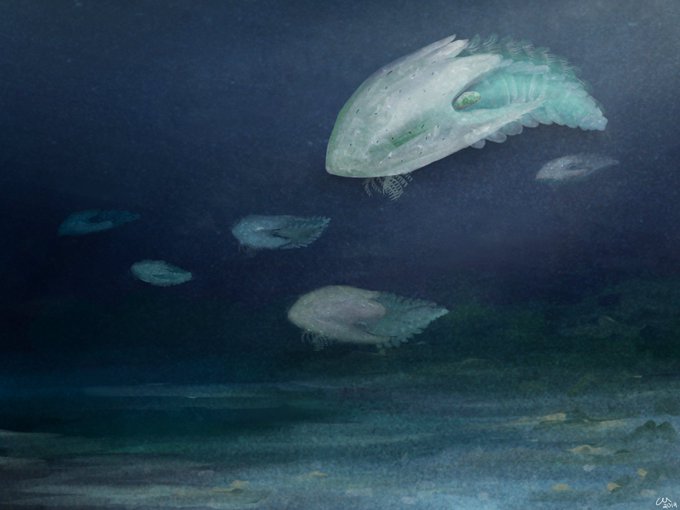cambrorasterのTwitterイラスト検索結果。 5 件
#みんなでつくるTwitter古生物図鑑
カンブロラスター ファルカトゥス
#Cambroraster falcatus
カンブリア紀 ウリューアン期
カナダ バージェス動物群
推定最大体長約30cm
海産
ラディオドンタ類 Radiodonta
フルディア科 Hurdiidae
Happy #ValentinesDay/#FossilFriday! We still don’t know how Radiodonts reproduced, but it probably started (at least in some species) during mass-moulting events, when large numbers of them got together to moult. See fossils of #Cambroraster, for example. (1/2)
#Paleontology
While scowering the ocean silt of Marble Canyon, a lone #Cambroraster is suddenly surprised by the appearance of Zacanthoides, a trilobite that had quickly emerged from the silt and attacked the Hurdiid.
#Paleoart #Palaleontology #SciArt
The Burgess was home to several genera of Hurdiid anomalocarids, which survived by filtering food out of the fine silt, brine seeps, and water column, using comb-like frontal appendages. These include Peytoia, Stanleycaris, two species of Hurdia, and Cambroraster elsewhere.
Meet Cambroraster, a new Hurdiid from the Marble Canyon region in close proximity to the Burgess Shale. This animal is... incredibly weird, even for a Hurdiid. It had a tiny body, a giant, spiked head shield, and very strange appendages.
#Paleoart #Palaeontology #SciArt












